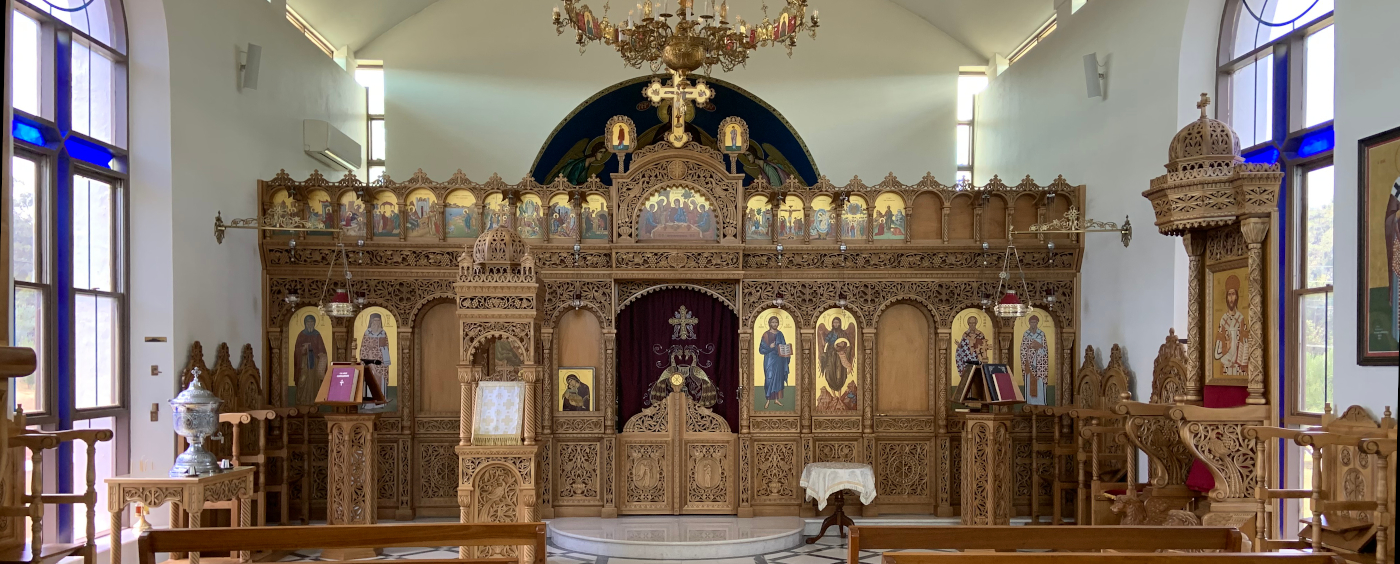Worship
Church of Saint John the Forerunner
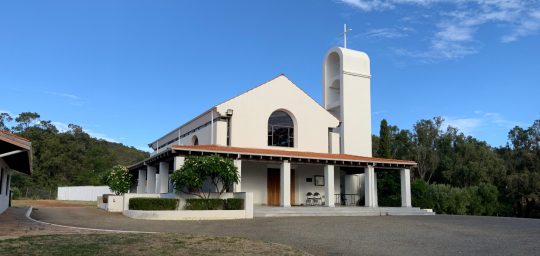
The Church of Saint John the Forerunner is the main place of worship in the Monastery and is dedicated to the Patron Saint of the Monastery. When the Church of Saint Paisios is fully completed and commences liturgical services in English, this Church of Saint John will be dedicated to the Greek language.
Church of Saint Paisios the Athonite
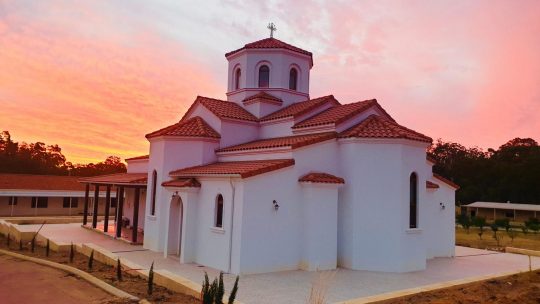
Our Monastery is blessed to have built the first Church in Australia, and one of the very few worldwide, named after Saint Paisios the Athonite. This Church will be conducting all liturgical services in English. We would especially like to express our gratitude to Mr Nicholas Kakulas and his family for donating the funds to build and furnish this Church. We are eternally grateful. Click here to see a pictorial view of the various stages of development of the Saint Paisios Church.
Saint George's Cave
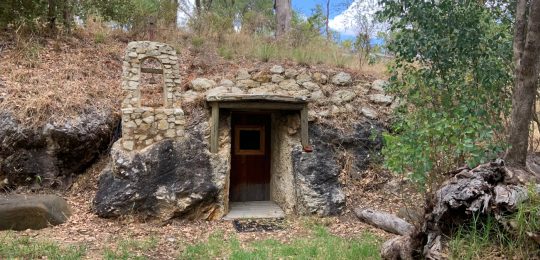
The Cave of Saint George is a very small and tranquil place of worship which is left open for pilgrims to go and light a candle, pray, and have some quiet time. It is open and available for both Monks and the laity.
Service times
The Monastery runs Matins and Divine Liturgy open to the general public each Sunday between 7:30 am and 10:30 am. The Divine Liturgy is followed by a complimentary morning tea in the Monastery Hall where all are invited to attend. Once the Church of Saint Paisios is fully functional, the Church of Saint John will be conducting all services in Greek, whilst and the Church of Saint Paisios in English. In the meantime, the Church of Saint John uses a mix of Greek and English.
Apart from the Sunday services, the Monastery also offers other services on Feast Days throughout the year. For dates and times, you can refer to Facebook for notifications.
Visiting Times
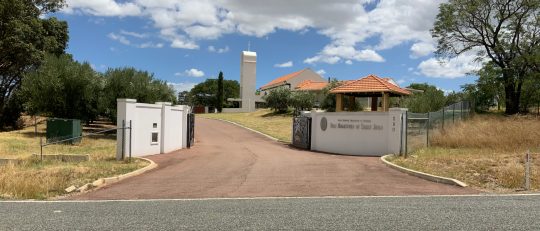
For visits excluding Sunday Liturgies, pilgrims are advised to make an appointment with the Abbot of the Monastery. Appointments can be made with the Abbot, Father Prodromos on the following:
Telephone: +61 (0) 455 855 326
Email: frprodromos@stjohnmonastery.com.au
Monastery dress code
Here, we outline some of these basic rules for modest and respectful dress in an Orthodox Church.
Dressing for God
Every Christian (and non-Christian) should use good judgment when entering the Church. The Church is the House of God. It is not just any ordinary place. When we enter, we do so humbly, with a sense of unworthiness. We dress as modestly and respectfully as we can, because we are in the presence of God Himself. If invited by any earthly king or queen, we would dress in our finest clothes. Therefore, we should dress similarly when accepting an invitation from the Lord of Heaven.
The way Orthodox Christians dress, both in and outside the temple, reflects their way of life and dedication to and fear of God. We dress modestly at all times, not in a flashy or provocative way that brings attention to ourselves. We go to Church to worship God, not to make a fashion statement. Below are some general guidelines for dress. Keep in mind these vary from parish to parish and from Monastery to Monastery, depending on the Archdiocese (Greek, Russian, Serbian, etc.).
Gentlemen
The dress code for men attending an Orthodox Church is rather simple. Here is a quick list of acceptable attire for gentlemen:
- Collared button-up shirts,
- Clean dress pants (no shorts),
- Jumpers or vests.
- Jeans do not qualify as “dress pants,” as they are too casual, especially when they have patches or holes. Men should never wear shorts when visiting a parish or a Monastery, even in the summer months.
Ladies
For ladies, the dress code is a little more detailed, and perhaps harder to follow. The main reason for this is overabundance of immodest clothing that is available these days. Here are items acceptable for a woman to wear in the House of God:
- Modest dresses and blouses (no low-cut necklines or open backs)
- Sleeves (no tank tops or sleeveless tops – unless you wear a jumper to cover the shoulders) Knee-length or longer skirt or dress
- Traditionally, women do not wear pants at Church, especially so when visiting a Monastery. And as with the gentlemen, ladies should also refrain from wearing jeans or shorts to services. Ladies must also avoid short skirts, skin-tight clothing, and strapless or sleeveless tops.
- When it comes to footwear, so long as your dress shoes or sandals are clean, they are generally acceptable.
